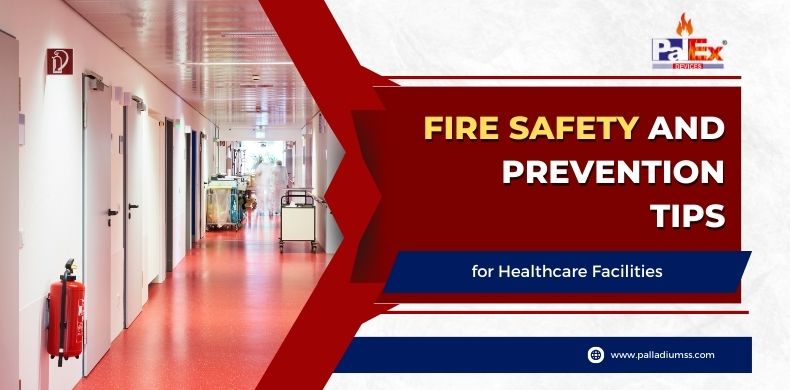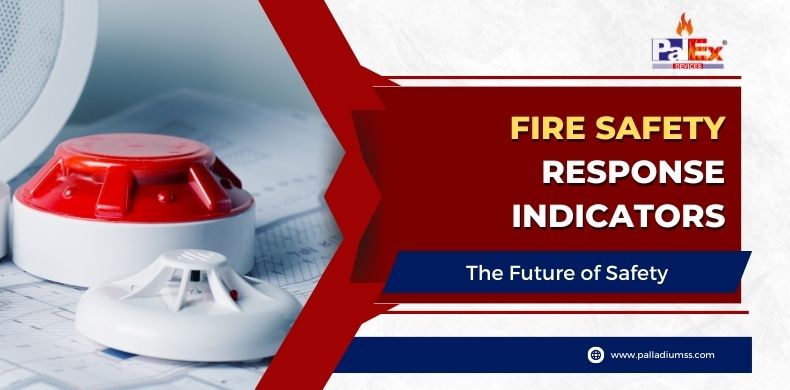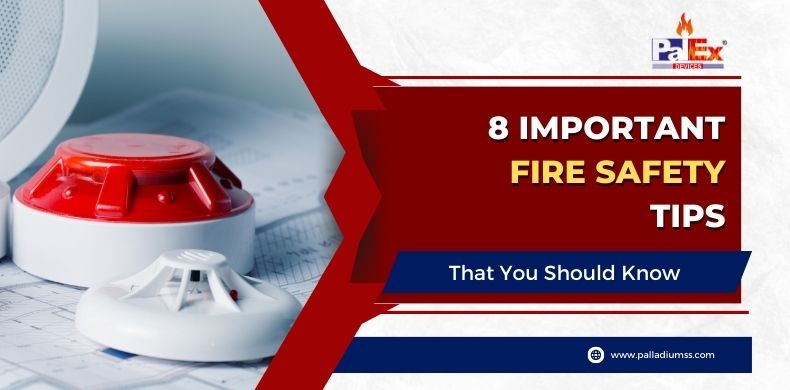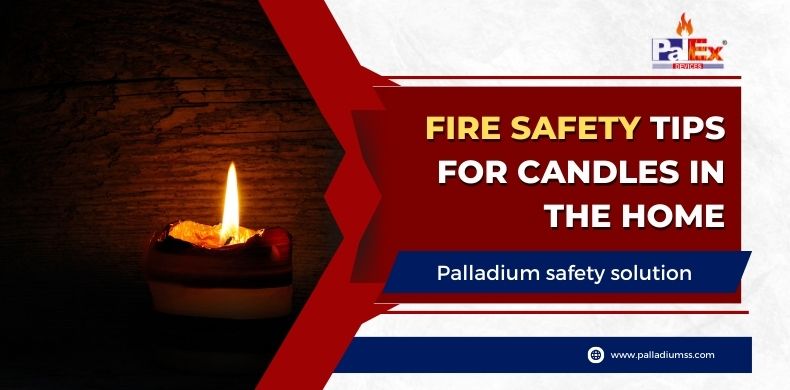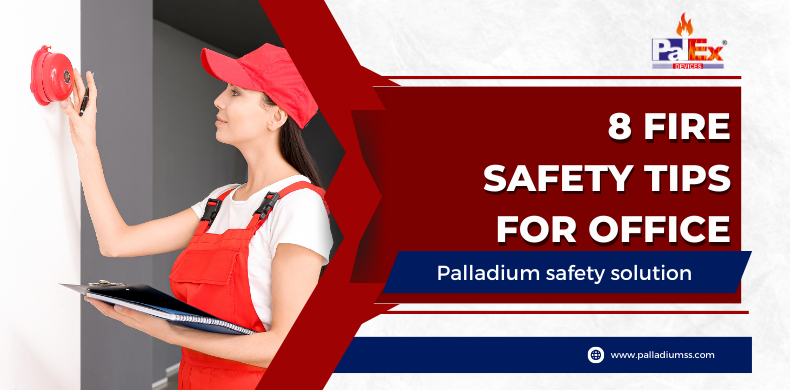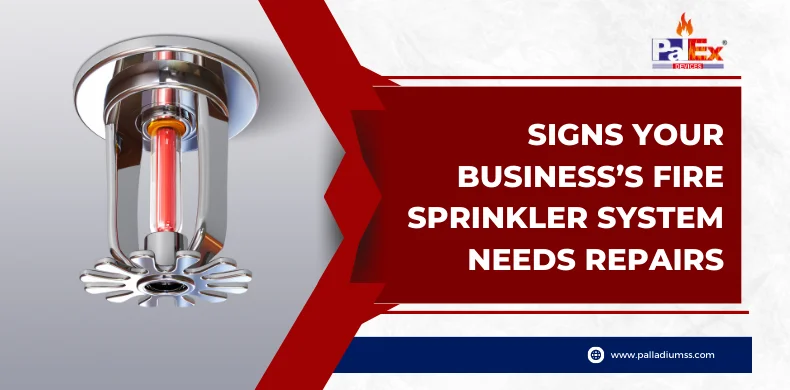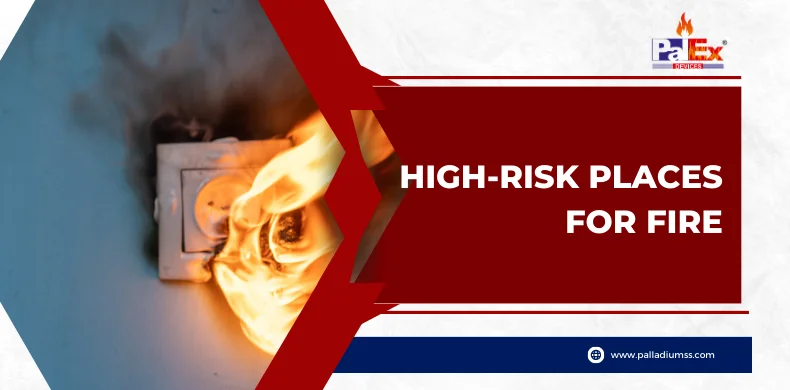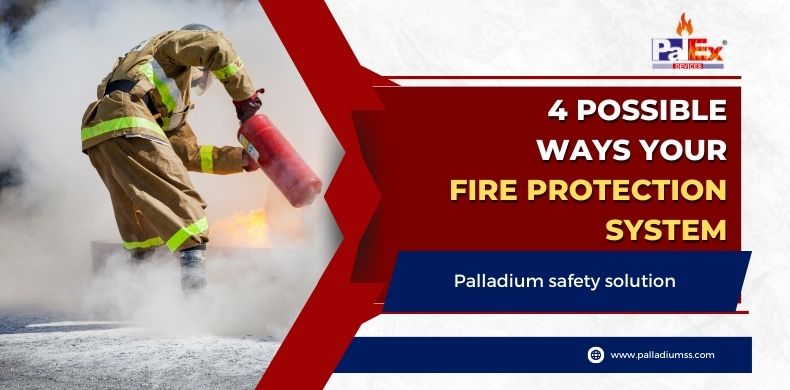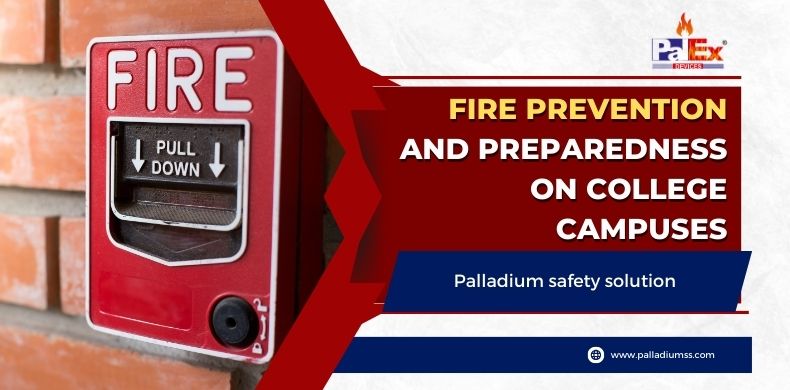Many people in hospitals cannot get out of bed because of their physical condition or health. Additionally, health care facilities have ample supplies of oxygen, volatile chemicals, and other drugs that can spread fires and emit deadly fumes into the air. These are some of the important factors to consider when planning and implementing fire safety and prevention procedures for a healthcare facility.
Fire Safety in Healthcare
- Develop a fire safety and evacuation plan, and make sure everyone at the facility knows these procedures. If possible, conduct fire drills to ensure that all workers are aware of evacuation methods and what to do in the event of a fire.
- Ensure that all exit doors, evacuation routes, and main paths are unobstructed and clutter-free. Follow local regulations for door locking and fire door maintenance.
- Train the workers to use ABC fire extinguisher 1 kg.
- Make sure employees know where the fire alarm system is and how to activate them.
- Learn where compressed gas and oxygen shutdown controls are located and how to use them.
- Ensure staff is aware of the need to take immediate action in the event of a fire to keep patients safe.
- Make sure staff know how to move patients quickly and safely, and they also know what needs to be done to ensure patients stay safe in the event of a fire.
Also read :Fire Safety Checklist for Your Business – Complete Guide
Fire Prevention in Healthcare
Fire prevention is the best approach to fire safety. However, no installation is perfect, and no plan can prevent all potential causes of fire. To reduce the chances of a fire, the following prevention tips can help you:- Avoid smoking inside the building, especially among the sick. Negligence with cigarettes or other smoking materials is a major cause of fires in residential settings. If there is a designated smoking area, insert large metal ashtrays that are designed not to tip over. Make sure no one smoke near the oxygen supply.
- Be careful about electrical wires, tools, and electrical equipment. Make sure electrical wires and sockets are in good condition without any damage, cracks, or frayed areas. Do not run electrical wires under carpet or rugs or overload electrical outlets or extension cords. Also, replace any appliance, tool, or equipment that emits sparks, smoke, or unusual odors.
- Be careful in areas where fires may be more likely. Take extra precautions in kitchens, dining rooms, laundries, and any other area where fires are likely to occur.
- Clean lint traps in your washer and dryer, making sure grease and other flammable materials don’t build up on kitchen equipment. Also, be sure to store flammable materials safely.
- Ensure that the alarms are working and the fires are extinguished. Follow local requirements for the placement and maintenance of fire alarms, optical smoke detector, carbon monoxide detectors, and fire suppression systems. Ensure that alarms and detectors are checked regularly and are constantly operating.
Fire Safety Response Indicators: The Future of Safety
In today’s fast-paced world, the safety of our homes, workplaces, and public spaces remains a top priority. Fires pose a significant threat among various potential hazards, often resulting in devastating consequences.
Technological advancements and data-driven approaches, fire safety response indicators are emerging as a game-changer in our quest to mitigate fire risks and enhance emergency response efforts.
This blog delves into the concept of Fire Safety Response Indicators. It explores how they are shaping the future of safety.
Understanding Fire Safety Response Indicators
Fire Safety Response Indicators are advanced systems created to watch, analyze, and predict possible fire dangers instantly. These indicators use high-tech technologies like –
1. Artificial intelligence
2. Machine learning
The Internet of Things
Data analytics gather and handle vast amounts of information from different sources.
This information includes temperature, smoke density, gas levels, occupancy, and people’s behaviour.
Key Benefits and Features
1. Early Fire Detection: Traditional fire alarm systems often use smoke or heat detectors to identify fires. Fire Safety Response Indicators go beyond these conventional methods by utilizing sophisticated sensors and algorithms to detect anomalies, even before visible fire signs emerge.
This early detection significantly reduces response times, giving occupants more time to evacuate safely and firefighters a head start in controlling the blaze.
2. Predictive Analytics: One of the most exciting aspects of Fire Safety Response Indicators is their ability to analyze historical data and predict potential fire hazards.
By identifying patterns and trends, these systems can assess risks more accurately and proactively implement preventive measures.
3. Real-time Monitoring and Alerts: Fire Safety Response Indicators provide real-time monitoring of crucial parameters.
In case of any abnormality or potential fire hazard, these systems trigger immediate alerts to relevant authorities and building occupants, allowing for swift action.4. Integration with Building Management Systems: These indicators can seamlessly integrate with building management systems, enabling automatic responses such as closing fire-rated doors, activating fire suppression systems, and controlling elevators for safe evacuation.
5. Remote Monitoring and Control: Fire safety professionals and building managers can access the data and control the system remotely through secure online interfaces, ensuring continuous oversight even when physically distant.
The Impact on Fire Safety
Implementing Fire Safety Response Indicators has the potential to revolutionize fire safety practices.
Key ways in which they are transforming the landscape of fire safety:
1. Enhanced Emergency Response: These indicators’ real-time data and predictive capabilities empower emergency responders to make more informed decisions.
This, in turn, increases the effectiveness of firefighting efforts, ultimately saving lives and minimizing property damage.
2. Improved Evacuation Strategies: With early fire detection and prompt alerts, occupants can evacuate quickly and efficiently, avoiding panic and congestion that might hinder safe evacuation.
Fire Safety Response Indicators help create well-structured and adaptive evacuation plans tailored to each building’s unique characteristics.
3. Reduced False Alarms: Traditional fire alarm systems are susceptible to false alarms triggered by cooking smoke or other benign activities.
Fire Safety Response Indicators are designed to distinguish genuine fire threats from non-emergency situations, significantly reducing false alarms and preventing unnecessary disruptions.
4. Data-Driven Safety Assessments: These indicators facilitate comprehensive safety assessments by continuously gathering data on fire incidents and responses.
Identifying areas of vulnerability, recurring issues, and the effectiveness of safety measures allows for continuous improvement in fire safety protocols.
5. Integration with Smart Cities: As cities become more intelligent, Fire Safety Response Indicators can be integrated into larger innovative city frameworks.
This ensures a more connected and cohesive emergency response system, enabling department collaboration during crises.
Also read :10 Essential Fire Safety Tips For The Entertainment Industry
Conclusion
Conclusion
Fire Safety Response Indicators are a big step ahead in fire safety technology. They provide a comprehensive approach to reducing fire risks and improving emergency response.
By detecting fires early, using predictive analytics, and monitoring in real-time, these systems are shaping the future of safety.
Embracing these advanced solutions brings us closer to a world with fewer fire-related disasters and better-prepared communities in emergencies. Integrating Fire Safety Response Indicators with intelligent city initiatives ensures a safer and more resilient urban environment for future generations.
8 Important Fire Safety Tips That You Should Know
Fire Safety Tips for Candles in the Home
8 Fire safety Tips for Office
There are 8 important steps given below, that can help in preventing fire in commercial places.
- Education About Fire-Safety: Employees should be made aware of the fire escapes or exit of the building in case of a fire. They should also be taught about the proper handling of the equipment that poses as potential causes of fire.
- No-Smoking Policy: Smoking is a major risk factor in places where inflammable objects are handled. However, even if the workplace does not deal with combustible material, smoking should be prohibited. High fines should be imposed on the defaulters so that everybody adheres to the rule.
- Installation of Smoke-Detectors and Alarms: Smoke detectors help in timely detection of fire and alarms alert the people before a major accident happens. These should be installed from a trusted dealer as a faulty detector or alarm can cost a fortune if they don’t function at the right time in case a fire happens.
- Installation of Fire-Extinguisher and Automatic Water-Sprinkler System: The commercial place should have high-quality fire-extinguishers as well as an automatic water-sprinkler system installed. This ensures timely action in case a fire strikes the workplace. Also, the employees should be taught how to operate fire-extinguishers and other fire safety equipment.
- Proper Disposal of Unnecessary Combustible Material: The workplace should not be cluttered with unnecessary flammable material. The place should be cleaned regularly and the inflammable waste should be properly disposed of away from the building.
- Maintenance of Electrical Systems: The electrical systems and appliances should be thoroughly checked and maintained in order to prevent fire. Old and faulty appliances should be immediately replaced as they consume more energy and also pose the risk of fire.
- Maintenance of Fire-Alarm and Smoke-Detector: These are the most crucial fire-safety equipment and therefore should never be neglected. These should be checked on a daily basis and old and faulty ones should be replaced quickly.
- Staying in contact with the Fire-Department: The workplace should be properly equipped and fire- safety experts should be given a tour of the building. The local fire department should be consulted regarding the betterment of the fire-safety status of the facility. The more aware the fire-department will be about the commercial building, the easier it will be for them to put off the fire before anything big happens.
Also read :How to Create a Fire Evacuation Plan
Thus, staying vigilant and aware of the workplace as well as the fire-safety techniques will help in preventing fire-related accidents.
Signs Your Business’s Fire Sprinkler System Needs Repairs
A small ignition source is enough for fire to destroy any massive thing in a second. So fire safety is crucial as it can save precious lives and avoid damage to property and materials.
Installing a fire safety system alone isn’t sufficient; you must inspect if it is in good working condition. This article points out some 5 signs your business’s fire sprinkler needs to be inspected and repaired.
What is a Fire Sprinkler?
Among all the other components in a fire equipment system, the fire sprinkler is crucial. It is responsible for triggering and discharging water or another fire-extinguishing medium to extinguish a fire in your building. So the sprinklers are designed to respond to fires automatically when it senses them. Despite playing such an important role, if it is not working in need of the hour, everything would go in vain.Signs Your Business’s Fire Sprinkler System Needs Inspection & repair
In this segment, you will find the signs that point out you need to repair or replace your existing commercial fire sprinkler system.- Leaks: Leaks in your fire sprinkler are a major concern and need immediate inspection. These leaks not only prevent your fire safety system from triggering in case of a fire but also risk property damage. So if you find puddles or water damage near pipes, then it’s a burst or leaky pipe, and it needs a quick check. Upon inspection, you can decide whether to repair or replace it.
- Head/Pipe Damage: There are multiple chances for your system to get physically damaged. If you spot any visual damage on the head pipe or the other pipping connected, it can lead to malfunction and thus result in improper water flow in case of a fire.
- Corrosion: The metal pipe connected to the sprinkler holds water. So the chances of getting corroded are high. If the metal piping in your system is corroded or rusted, then it might cause the sprinkler to leak. So check for corrosion in your sprinklers if you notice any rust or any discolored water from the pipe.
- Your Fire Extinguisher System is Old: If you can find visual damage or leak in multiple places where you have installed your fire safety equipment, it indicates that it’s time to inspect its proper working. As older materials can have internal defects or outdated parts for proper fire prevention, it needs replacement.
- Physically Remodeled the Building: Remodeling a building involves cutting up drywall and infiltrating sensitive components in the building’s interior. If you have altered your building, it is critical to inspect the fire sprinkler system to ensure optimum working conditions.
What Does an Inspection Include?
Now comes the crucial question. The fire sprinkler inspection includes a comprehensive check on your entire system. You must check the sprinkler’s head, gauges, and control valves for correct functionality. Additionally, the sensors and alarm device needs to check for any malfunction or damage, whereas the flow valves and main lines need to check for corrosion, rust, or signs of damage.Fire Sprinkler Inspection Schedule
The fire sprinkler inspection is often scheduled annually, semiannually, quarterly, and sometimes monthly. However, this depends on some factors like your building’s occupancy type, the components used in the sprinkler system, etc.What is the Difference Between Testing and Inspecting a Fire Sprinkler System?
Inspecting the fire sprinkler system involves examining the sprinkler head for signs of leakage, corrosion, and paint.
Meanwhile, testing the fire sprinkler system involves checking if it’s functioning properly. For example, testing for proper water flow and pressure, checking if the sprinkler gets activated automatically when the alarm is activated, etc.
Either way, if you find some component damaged, it get repaired ASAP.
Also read :Benefits of Installing Fire Sprinklers in Residential and Commercial Buildings
Conclusion
Now that you have read this quick blog, are you able to spot the same signs in your building’s sprinkler system? Well, then it is high time you get it inspected by yourself or seek professional support. After all, you can’t take chances on safety. Thanks for reading through!How Can You Help Fire Safety in Your School
There are many potential fire hazards in a school setting. Some of these include electrical equipment, flammable materials, and cooking appliances. To help prevent a fire from starting, keep an eye out for these hazards and report them to a teacher or administrator if you see them. You can also help by keeping your work area clean and tidy.
Why Fire Safety is Important in Schools
Schools are places where large groups of people congregate daily. This makes them prime targets for fires. A fire in a school can cause massive amounts of damage and even loss of life. That is why it is so important to take steps to prevent fires from happening in the first place and be prepared in case one occurs.
There are many potential fire hazards present in a school setting. Some of these include electrical equipment, flammable materials, and cooking appliances. To help prevent a fire from starting, it is essential to be aware of these hazards and take steps to mitigate them.
For example, ensure electrical equipment is maintained correctly, and flammable materials are stored safely away from heat sources. If a fire breaks out, it is also essential to know the evacuation routes and have a plan. By being prepared, you can help ensure that everyone gets out safely.
Finally, you can help spread the word about fire safety solutions to others in your school community. You can do this by participating in safety drills, sharing information about fire safety with classmates or younger students, and reporting any potential hazards you see to a teacher or administrator immediately. By working together, we can help keep our schools safe from fires.
Different Types of Fire Safety Equipments
There are many different types of fire safety equipment available. Some of this equipment includes fire extinguishers, sprinklers, and alarms.- Fire Extinguishers can put out small fires before they have a chance to spread.
- Sprinklers are designed to activate automatically when a fire is detected and help douse the flames with water.
- Siren Alarms can be used to warn people in the event of a fire and help them evacuate safely.
Also read :Evaluation Factors to Choose the Top Fire Protection Companies
Conclusion
In conclusion, it is essential to be aware of the potential fire hazards in a school setting and take steps to prevent them. You can also be prepared in case of a fire by knowing the evacuation routes and having a plan. Finally, you can help spread the word about fire safety to others in your school community. By working together, we can help keep our schools safe from fires.High risk places for Fire
The most vulnerable places for a fire to occur are our homes, offices, schools, and other places of shelter and work. Poor-quality electrical wires, faulty electrical outlets, gas stoves with inflammable items nearby, and old appliances that have broken wires are all a few causes of fire. Unclean dryer lint is the main cause of fire in laundry rooms. Floating sawdust, cigarettes, unclean hearth of the fireplaces are a few other causes of the fire that happen more due to neglect.
The storage of combustible material, inflammable liquids, faulty electrical appliances, overloading of power sockets, and other activities of neglect make factories, industries and warehouses are highly susceptible to fire. In many places, waste such as paper, cardboard, and other combustible materials are left on site. If not disposed of properly these can easily catch fire. Even a carelessly discarded cigarette can become the ignition source for these materials and cause a fire. Therefore, storing waste on-site work should always be avoided and proper disposal should be ensured. Chimneys that are left unclean for a long time, ground-heaters, and heated land-mowers are all potential fire hazards.
Dust and powder from plastic, metal, and wood activities can cause explosions if proper ventilation is not made available. Mines and factories are at a high-risk therefore extraction fans should be installed. Flammable liquids and vapors also pose a big threat and should be handled with caution. The vapors become instantly inflamed if they come in contact with a spark and also lead to explosions. Thus to reduce the risk of fire by vapors or liquids, they should be sealed properly.
Also read :Warehouse Fires – A Nightmare for a Business
Suspended ceilings, attics, and electrical boxes inside walls are some difficult places to identify an impending fire accident. Unattended cooking, mishandling of appliances, old wiring, water spilling over electrical equipment, and other errors on the part of people also contribute majorly to these accidents at home as well as the workplace.
4 Possible Ways Your Fire Protection System
Introduction
The foremost step in preventing a fire related accident is always staying prepared. A place that is well-equipped for preventing and managing a fire will always have the upper-hand in case a fire really does happen. Continue reading “4 Possible Ways Your Fire Protection System”
Fire Prevention and Preparedness on College Campuses
Fire misfortune is a national misfortune. There are several fires in dormitories, sororities, fraternities, and off-campus housing that lead to the loss of many lives and property. With diverse activities that happen on a college campus from classes to community events, from living to the gathering, and more, many aspects of fire and life safety need to be addressed.
Also Read: Here Are Some Fire Safety Tips After You’ve Purchased a New Home.
Here are some aspects that every campus should address to safeguard lives and property.
- Fire Alarms: Fire alarms are the most important and essential part of a full fire protection system. Whether you continue with maintenance or installing new fire alarm systems like the 16 zone Fire Alarm Panel, without it you can never think about fire safety.
- Fire Alarm Monitoring: Correct timing is everything in case of any emergency. A good fire alarm monitoring system can give a fast response during an emergency so that precautionary steps can be adopted to minimize the damage.
- Emergency Exit Lighting: During an emergency, emergency exit lighting helps in safeguarding people to escape from the building.
- Fire Extinguishers: Installing and maintaining fire extinguishers is not enough, train the employees and students on how to use them so that they can use them in case of any emergency. Install from a reputed fire extinguisher manufacturer.
- Fire Sprinklers: Fire sprinklers are the best fire suppression system. They restrict the fire to spread and can easily control small fires. Different types of sprinklers can be used particular places.
- Kitchen fire suppression: Following safety codes and installing proper fire prevention and suppression systems in cafeterias, Mess, and other commercial kitchens on the campus help to protect fire incidents.
- Special Hazard system: Some places on campus require additional safety and security like a server room, science labs, library, museum or quality artifacts, academics section, and others. These places require more water sprinklers, fire extinguishers, and fire alarms and they should be maintained properly. So to protect these assets of the campus, special hazard systems need to be installed.
- Design and practice evacuation plans: Evacuation practices can help save lives although it may seem unnecessary to busy staff and students at first. The action plan that is required to have:
- A method for reporting fires.
- An evacuation policy and procedure.
- Routes assignments and Escape procedures, such as floor plans, workplace maps.
- Names, titles, departments, and telephone numbers of individuals both within and outside your campus to contact for additional information or explanation of duties and responsibilities under the emergency plan.
- Procedures for employees who remain to extinguish fires or perform other essential services.
- Rescue and medical duties must be assigned to special workers.
- Creating fire drills will properly prepare staff and students for any emergency

